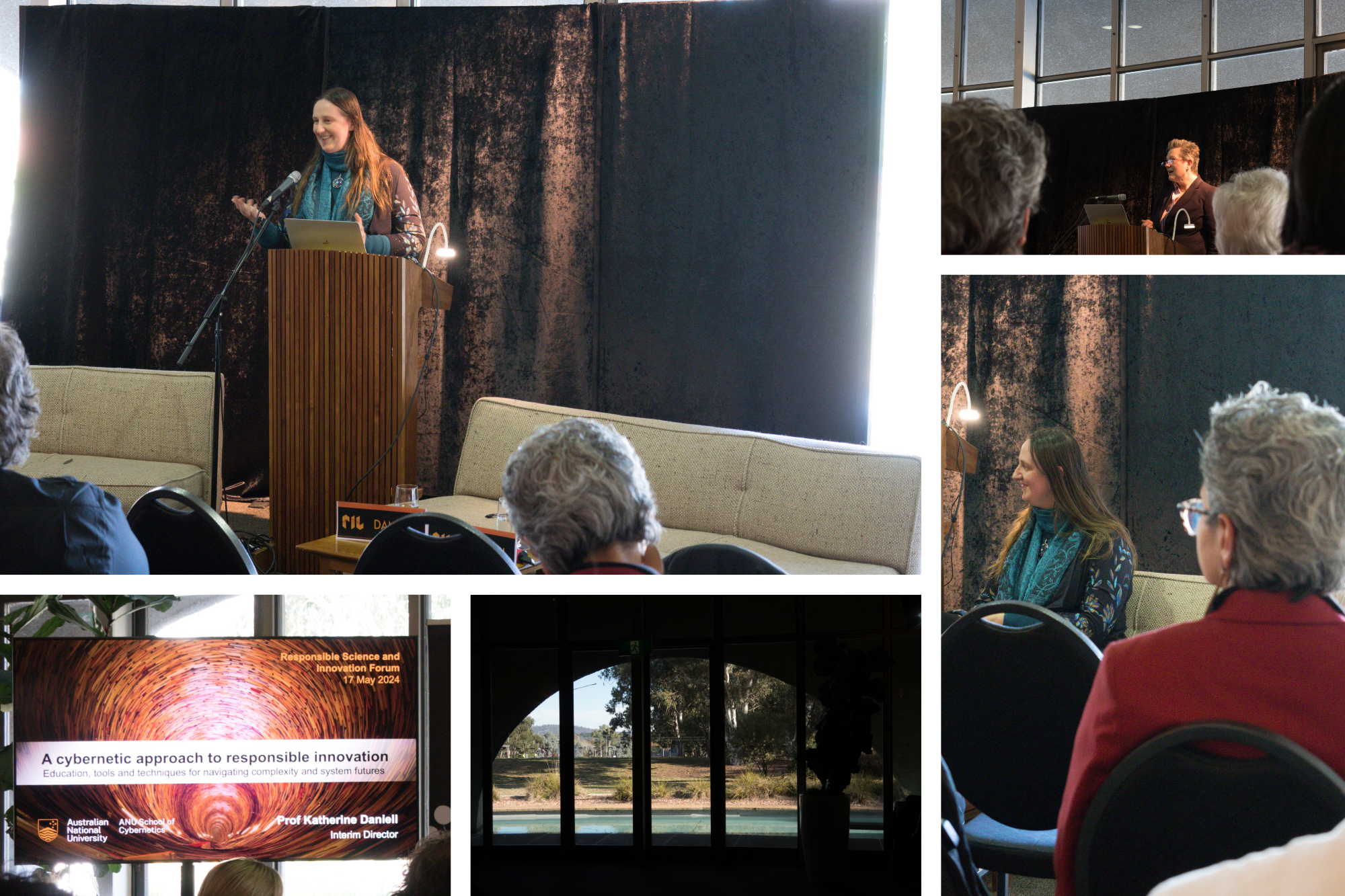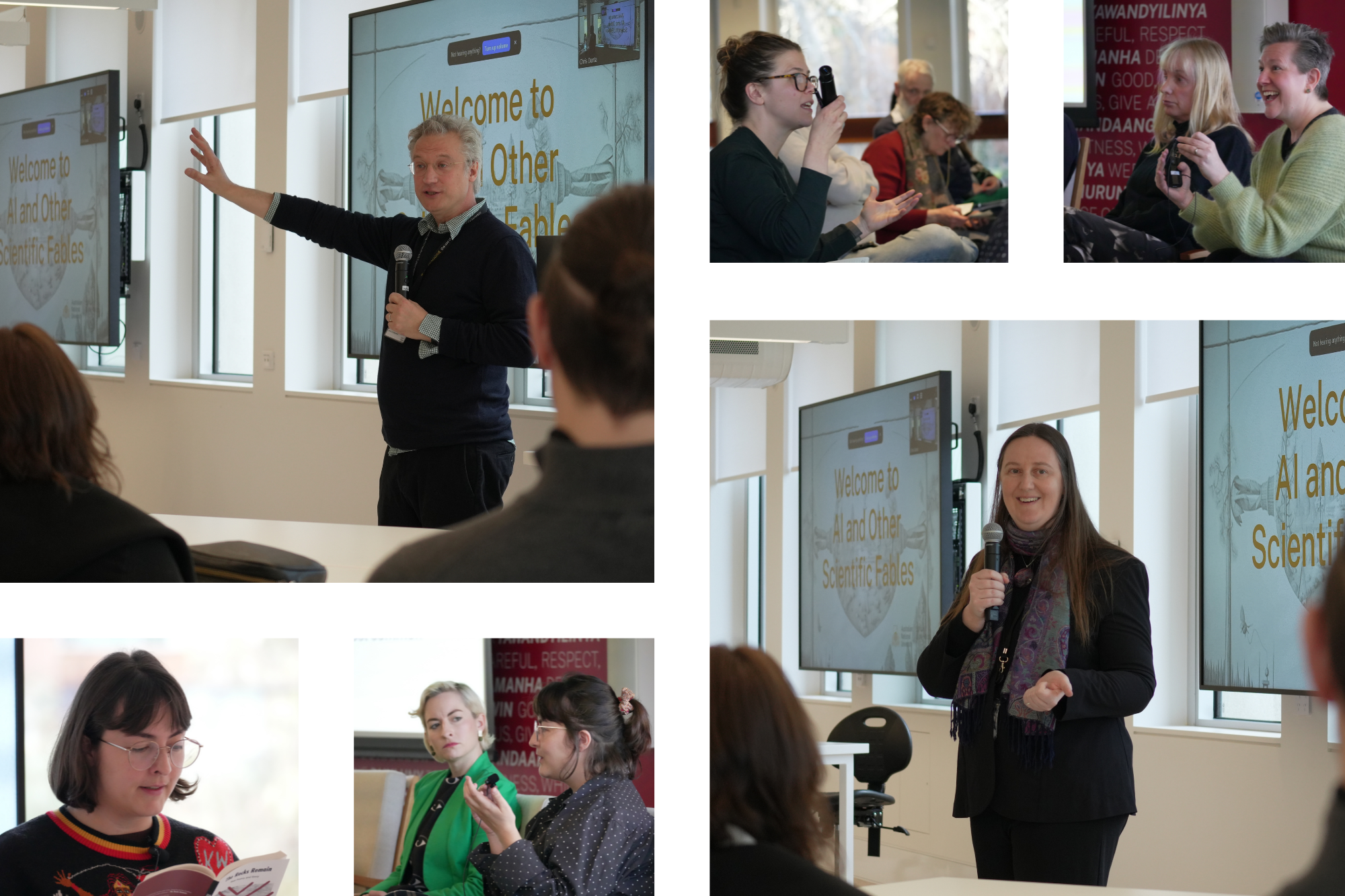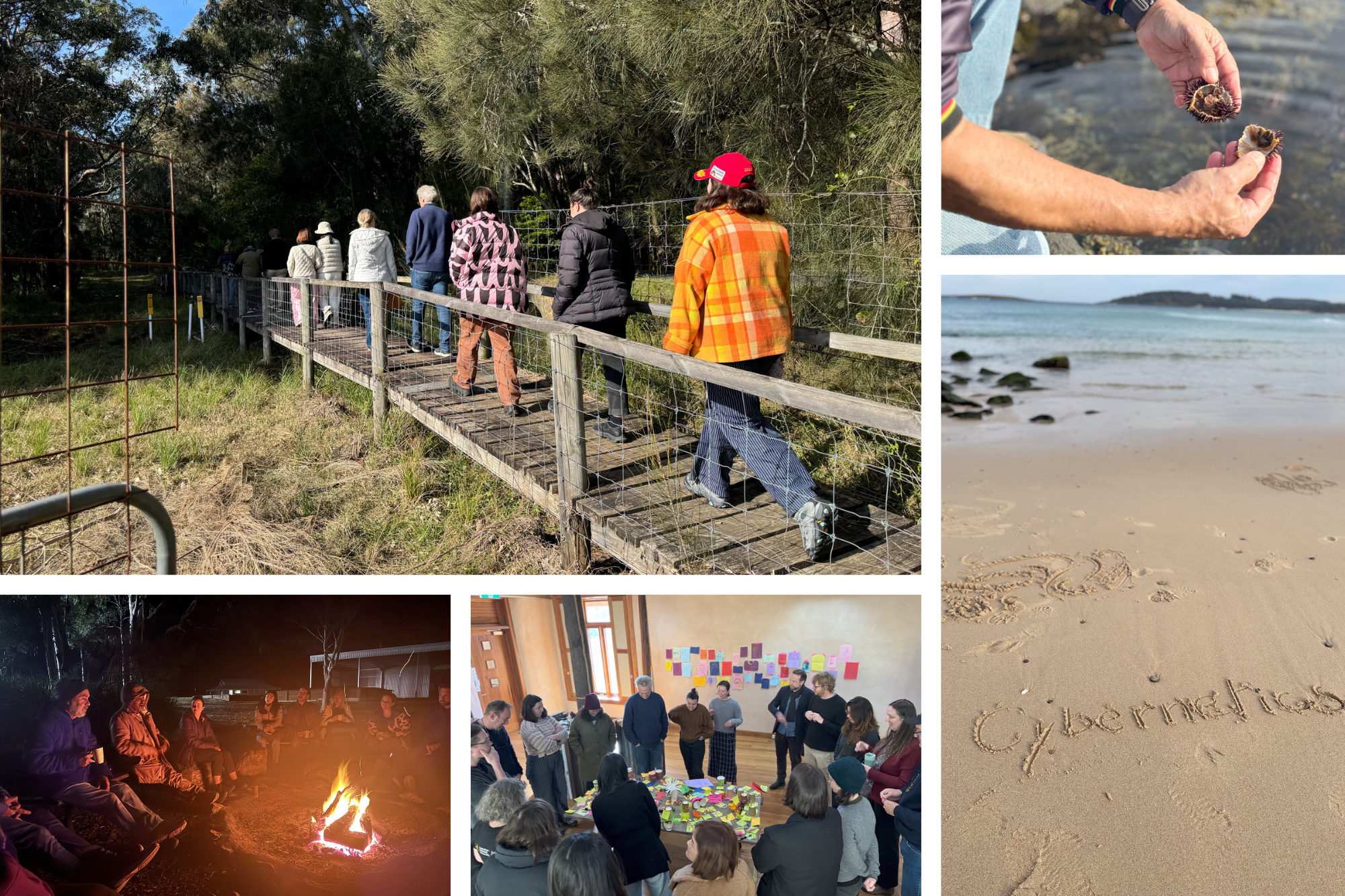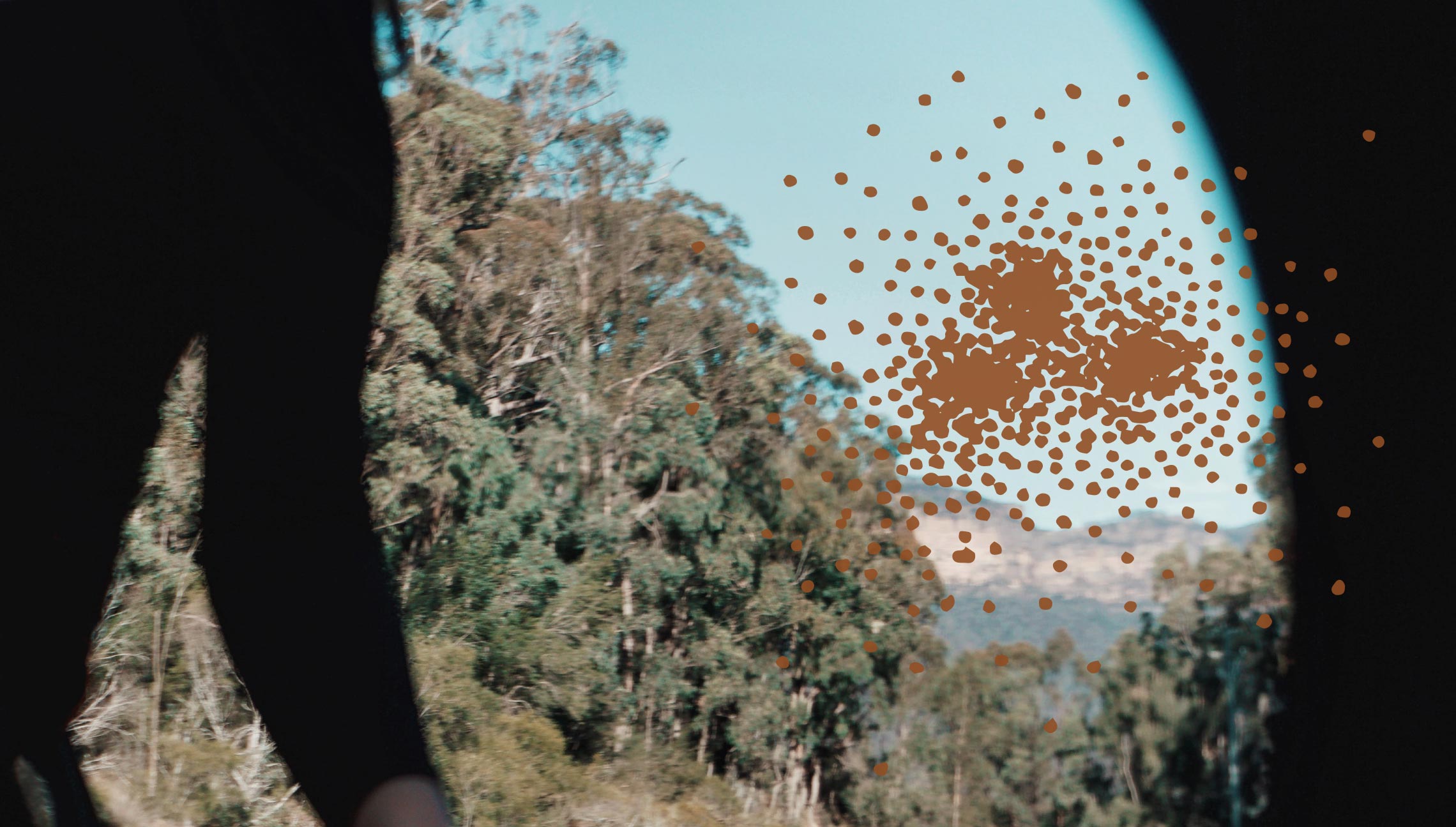Time flies when you’re leading a School. We caught up with Professor Katherine Daniell to ask her about the whirlwind that has been her first 6 months as Interim Director of the School of Cybernetics.
Here are the activities of the School of Cybernetics through the eyes of the director, major events, talks, works that Katherine has experienced and been a part of in just the last short six months.
Leadership in action#
March 2024, now 6 months ago, was a time of possibility and anticipation.
This month we shared a few special moments with Katherine, including her essay for the UN Riverwalk process 2023, her episode on the Scholar’s Podcast, and her appointment as Interim Director for the School of Cybernetics.
Katherine, in March, what was most exciting to you about coming into the Interim Director position?
“There was something so special about the School’s leadership team keeping the school going whilst we had an Acting Director. Coming into the Interim Director role from already within the School, gave us a great opportunity to maintain stability and enable a more graceful transition of leadership change. At the School of Cybernetics we are leading from everywhere. There is this great sense that our style of leadership here enables all people in this place to help bring the newest school at ANU and its radically transdisciplinary and impact-oriented mission forward, and for me there is an exciting realm of leadership possibilities.”
Cybernetics as a tool for societal transformation#
In April, Transformative Participation for Socio-Ecological Sustainability was published, a book for which Katherine wrote the introductory chapter.
In this book chapter Katherine puts participatory practices, engineering, and cybernetics into a historical perspective to show where their background philosophies and practices came from. You can hear her talk about it here:
Katherine, how does this mirror other activities occurring at the School at the time/across time?
“The work and framing of cybernetics in this chapter mirrors the move that’s been happening within the school, which is a transition from focussing our efforts on explaining ‘what is cybernetics’ to getting comfortable with ‘how we can use cybernetics’. We see this emergence more in our conversations about using cybernetics practically, as a tool focussed on societal transformation.”
Sharing the uses and value of cybernetics#

In May, Katherine was invited to speak at the Responsible Science and Innovation Forum held at the iconic Shine Dome.
This was a forum attended by educators, researchers, directors, vice-presidents, commissioners, and students alike. At the School of Cybernetics, we are intimately familiar with the power of convening conversations. There’s a certain kind of magic when passionate, knowledgeable, and respectful people gather with purpose. Within this forum Katherine was able to share the journey of responsible innovation in the development of the School’s education, research and engagement programs, including the Master of Applied Cybernetics, through the lenses of various cybernetics methods.
May also held the official opening of the art installation from Cybernetic Imagination Resident Dr Ambelin Kwaymullina “Indigenous Futurisms and AI”, an important event for the School and First Nations people across ANU and beyond.
In the same month you attended the UN ANU Indigenous Law Fellowship Programme, teaching into the Global Warming session, what was unique about that event?
“This session was incredible. I had the privilege of teaching into this programme with First Nations people from all across the world, following an invitation from Prof Aunty Anne Martin and Prof Asmi Wood. Talking about cybernetics and sharing interdisciplinary ways of thinking that highlight the value of Indigenous knowledges, including how such knowledges echo and support cybernetic practices and means of navigating complexity. This programme aims to support the participants in their roles in decision-making processes and governance at local and global levels.”
Local and global connections#
In June we saw the coming together of a few different streams. A blue paper written by Katherine and Bradley Moggridge about Indigenous water engineering and aquaculture systems was launched at the 10th World Water Forum in Bali. The School of Cybernetics supported First Nations representatives Kye Moggridge and Jason Wilson to attend the Forum, which also featured the establishment of Martuwarra as the world’s first UNESCO recognised living water museum.
Katherine joined the School Learning Experiences team to deliver education experiences to Australian Government leaders, then headed to the World Economic Forum’s (WEF) Annual Meeting of the New Champions 2024 in Dalian China, to speak on the 10 Emerging Technologies of 2024 panel and engage in a range of conversations with points of view from Cybernetics.
Katherine what’s the significance of these events and relationships that the School is developing?
“It really highlights the relational community aspects and Australian-based nature of the cybernetics that we practice here at the School. We are committed to supporting First Nations leadership, and engaging in nationally and globally important conversations and learning experiences to share and build knowledge of value to creating more inclusive and sustainable futures together”
Welcoming interdisciplinary communities#

In July Katherine opened AI and Other Scientific Fables Symposium, a two-day long event led by Chris Danta through his ARC Futures Fellowship that invited interdisciplinary academics, creatives, and publics alike to come together.
Discussions focused on the scientific fable including stories that biologize AI, take inspiration from the sciences (particularly in fantastic and speculative fiction genres), and that include the nature of human-nonhuman relations.
What are the strengths and considerations needed to welcome interdisciplinary communities to the School?
“When it comes to building a place and a space for interdisciplinary conversations and communities it’s important to acknowledge that it is usually easier to welcome new ideas at the boundaries of certain fields and areas, and in pushing these boundaries, this is where some fantastic new strengths can emerge.”
School offsites#

In August, two offsites were held. The first for PhD students and supervisors, enabled connection and community building around the PhD research process. In the second, staff members from the School of Cybernetics gathered together to align strategically, relate interpersonally, and reset our cybernetic practices away from the ever-calling glow of the urgent email inbox.
Katherine what have you found the most difficult in your first 6 months in the director’s chair?
“Continuing to grow our alignment strategically together as a School, within CECC and the ANU, as we continuously build our own understandings of cybernetic practice. The challenges have been big in an organisational sense, but easy in many other ways – in no small part thanks to all the wonderful people that trust in another and work together to develop and experiment with new systems together.”
From challenges to moments of inspiring opportunity, 6 months goes by oh so quickly. At the School of Cybernetics we’re never standing still.
Explore more of what we are up to on our Projects and News pages! If you want to reach out and discuss, get in touch at: cybernetics@anu.edu.au.

